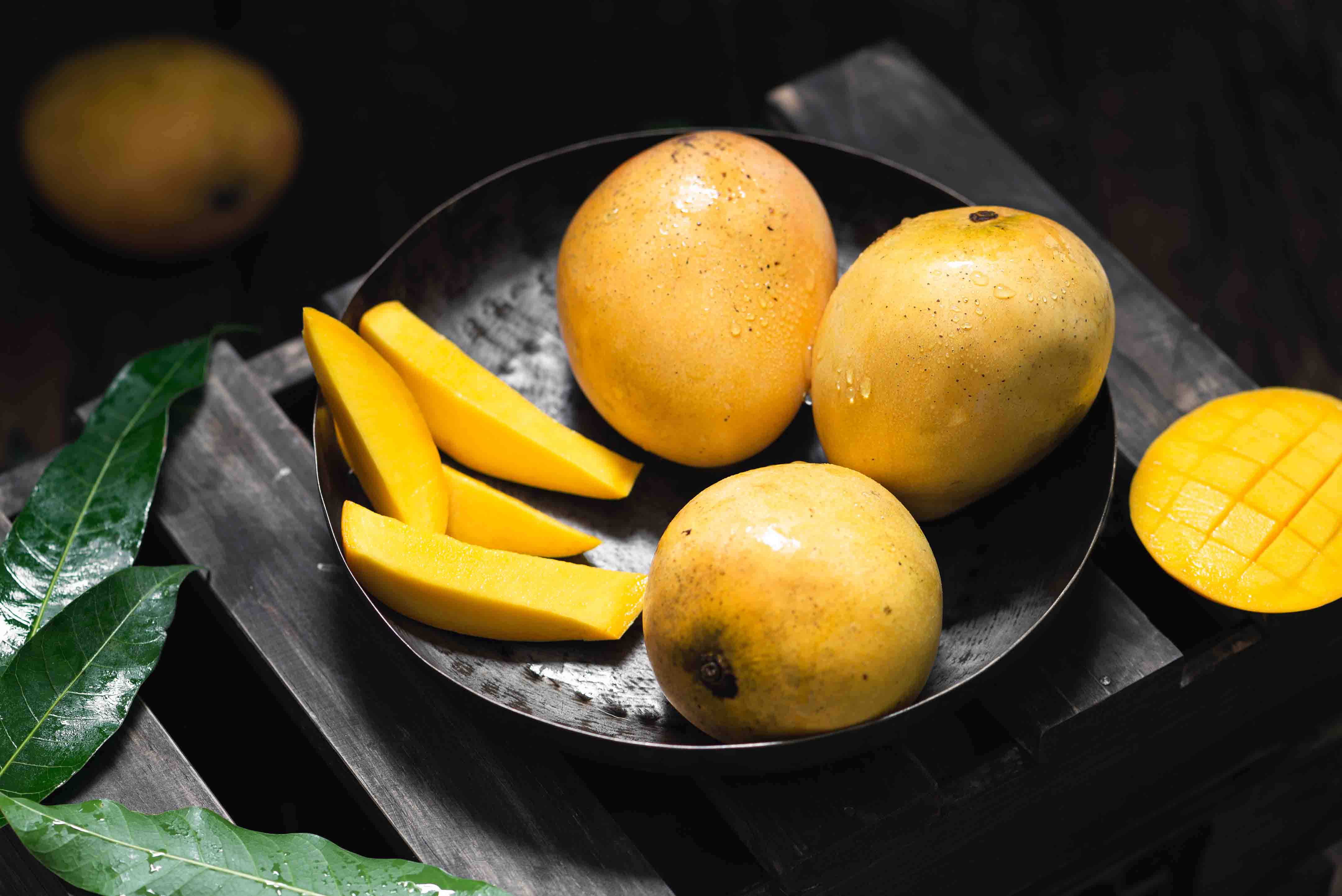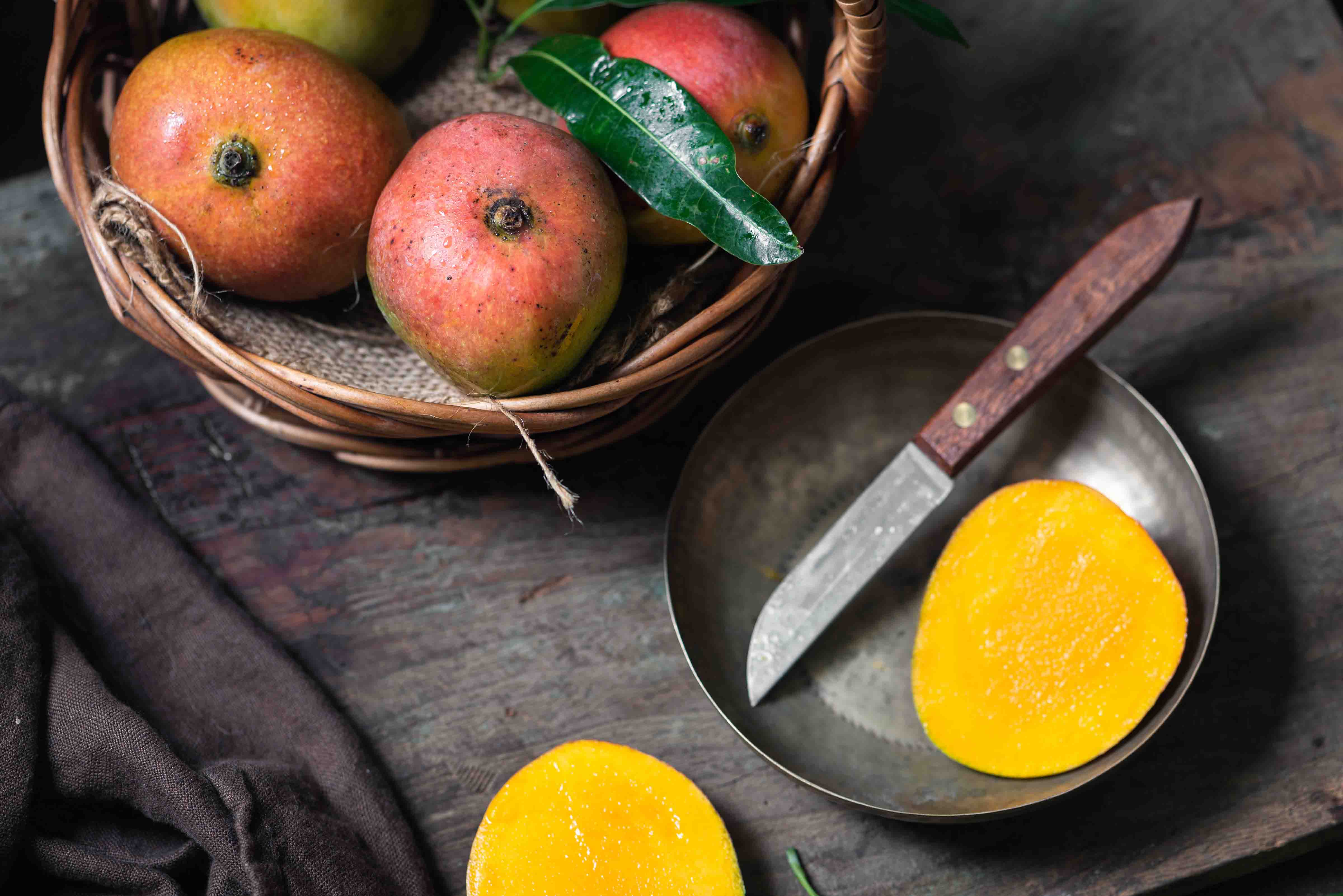The King of Fruits - Everything you need to know about Mangoes

Mangoes are undoubtedly one of the most delicious fruits out there. Popularly dubbed as the king of fruits, its juicy pulp is loved and devoured by people of various groups and ages all across the country. In fact, someone disliking mangoes may result in hearing a lot of gasps in shock from their friends and family!
The History of Mangoes
Mangoes were believed to have been discovered in India and East-Asia more than 5000 years ago. But it wasn’t till much later that mangoes migrated to other parts of the world. In fact, the king of fruits couldn’t migrate to other parts of the world on their own. Mango seeds travelled from Asia to the Middle East, East Africa and South America from around 300 or 400 AD.
So why is a Mango called a Mango?
A mango wasn’t always called a mango. This sweet fleshy delight of a fruit is known to have derived its name from the Malayalam word Malayam Manna, which the Spanish and Portuguese adopted when they came to India back in 1498 for their spice trade.
Why is Mango called the King of Fruits?
There are a number of reasons for mango being known as the king of fruits. They are available in abundance when in season, easy to consume and delicious, among many other reasons. However, the main reason Mango is called the king of fruits is due to its nutritional value.
The nutritional value of mangoes
Since mango is known as the king of fruits due to its nutritional value, let’s find out more about how this delicious fruit is nutritional to us. Mangoes are fat-free, cholesterol-free and sodium-free. That’s right! This satisfyingly sweet treat of a fruit isn’t not just loaded with flavour and sweetness, but also with amazing nutritional value. A cup of mango serving adds to more than 50% of your daily vitamin needs as well. Additionally, Mangoes contain more than 20 different vitamins and minerals, thereby making it a superfood.
The composition of a Mango
According to Healthline, a serving of about 165 grams of mango contains:
- Protein: 1.4 grams
- Carbs: 24.7 grams
- Fat: 0.6 grams
- Fibre: 2.6 grams
- Sugar: 22.5 grams
- Vitamin C: 67% of the daily intake
- Copper: 20% of the daily intake
- Folate: 18% of the daily intake
- Vitamin B6: 12% of the daily intake
- Vitamin A: 10% of the daily intake
- Vitamin E: 10% of the daily intake
- Vitamin K: 6% of the daily intake
- Niacin: 7% of the daily intake
- Potassium: 6% of the daily intake
- Riboflavin: 5% of the daily intake
- Magnesium: 4% of the daily intake
- Thiamine: 4% of the daily intake
The most popular types of mangoes
Like human beings or any other species, mangoes too exist in different varieties and types. Let’s take a deep dive into the some of these different types of mangoes:
Alphonso/ Hapus

Taste: Sweet rich flavour and creamy texture
Colour: Bright golden yellow with a tinge of red
Availability: May to June
Shape: Oval-shaped
Javadhu/Badami

Taste: Sweet
Colour: Pale yellow skin with orangish-yellow flesh
Availability: April to July
Shape: Round in shape with a tiny beak
Himayat/Immam Pasand

Taste: Slightly sour
Colour: Bright yellow
Availability: April to June
Shape: Oval-shaped
Senthura

Taste: Extremely sweet
Colour: Predominantly red with yellow
Availability: Early March to June end
Shape: Round
Other notable varieties of Mangoes

Kesar
Taste: Sweet but not as much as Alphonso
Colour: Dull yellow with a light, green tinge; saffron coloured pulp.
Availability: June to July
Shape: Roundish with a curved tip
Langra
Taste: Sweet
Colour: Green
Availability: Mid-july to August
Shape: Oval shape
Chausa
Taste: Extremely sweet
Colour: Bright Yellow
Availability: July to August
Shape: Egg-like shape
Neelum
Taste: Sweet and slightly sour
Colour: Saffron yellow with a red tinge
Availability: May to July
Shape: Oblique
Totapuri
Taste: Blandish sweet
Colour: Golden Yellow
Availability: June to July
Shape: Longer oval with a sharp curved point
Himsagar
Taste: extremely sweet
Colour: Green skin and bright yellow pulp
Availability: May to June
Shape: Egg-like shape
Where are the best mangoes available in Chennai?
Well, although we don’t like to brag, we have to say we at Madras Mandi can assure you that we only provide the best quality and variety of mangoes to satisfy all your mango needs. Not just mangoes, we provide you with over 200+ vegetables and fruits delivered to your doorstep for your daily needs, whether you’re a home cook, a chef or a restaurant owner! With real-time tracking of your delivery, you can rest easy and keep an eye on where your produce is and how quickly it gets delivered all through your smartphone.
How do I buy mangoes from Madras Mandi?
Madras Mandi’s variety of succulent and sweet mangoes are available on our website as well as our app. All you have to do is Register or Login and scroll through either our app or website and we’ll make sure we deliver them right to your door-step.
Register or Login via browser: login
Register or Login via the Madras Mandi app:
iOS - Click here
Android - Click here
What other platforms/channels are we available on?
Our social media team works hard in getting you the best content for all your veggies and fruit. If you are into offers, contests, hacks and facts that are sure to keep you amused!
Show us some love on our social media channels by giving us a follow!
Madras Mandi Instagram page: Click here
Madras Mandi Facebook page: Click here